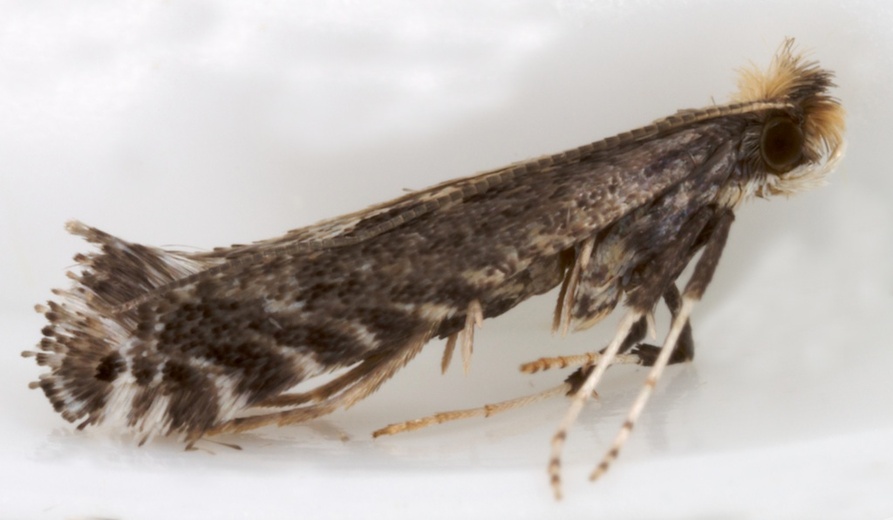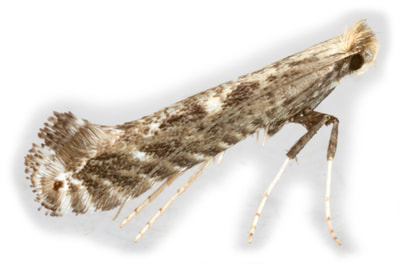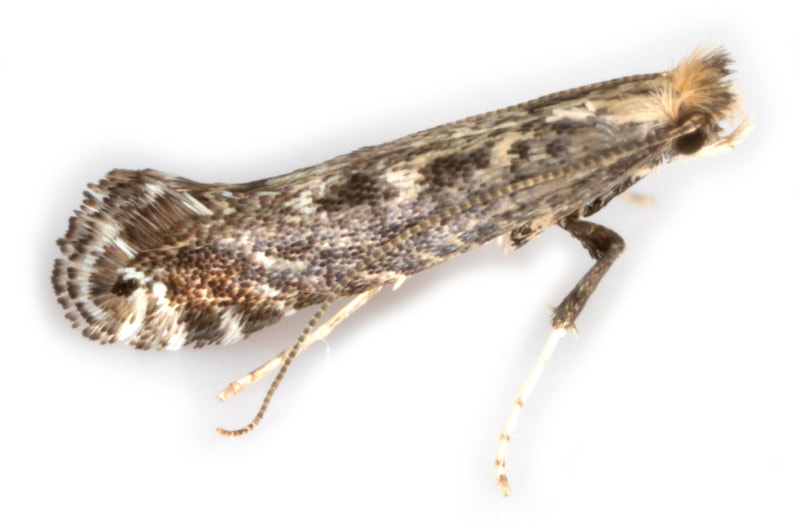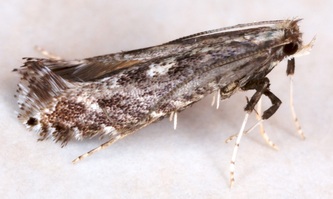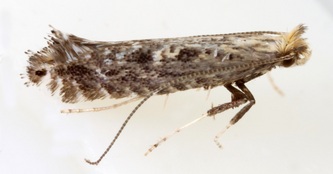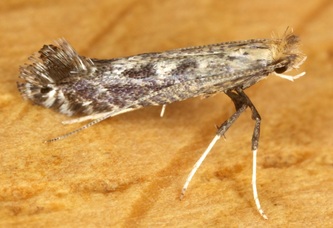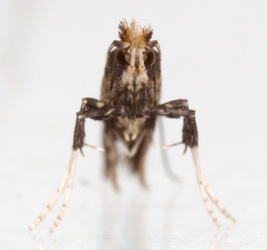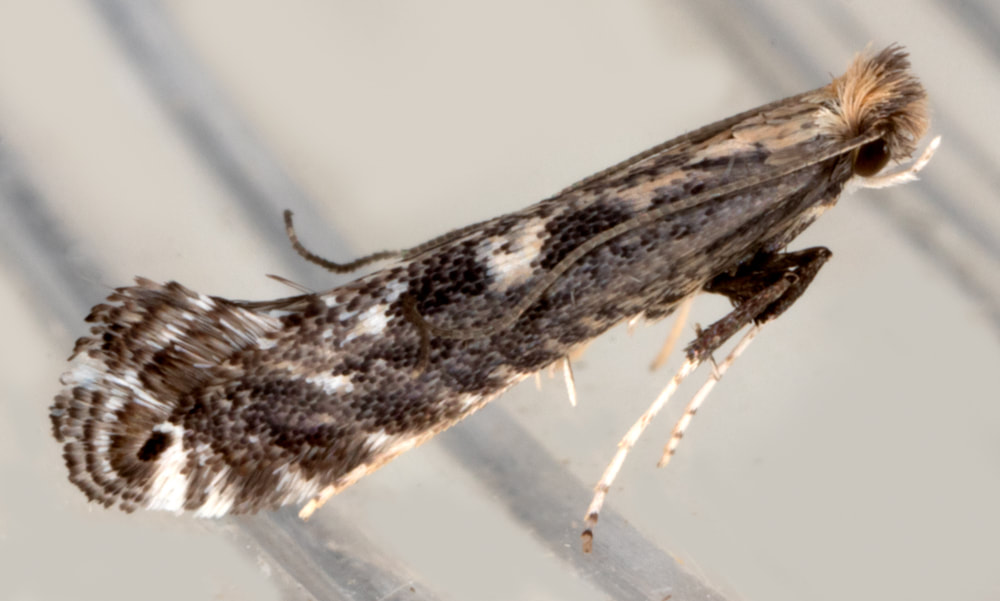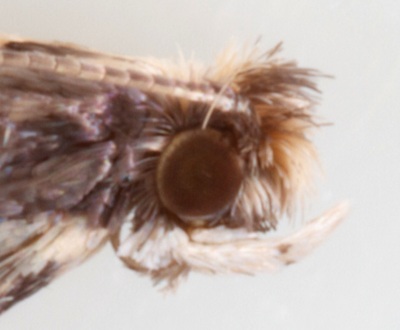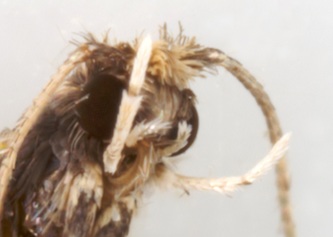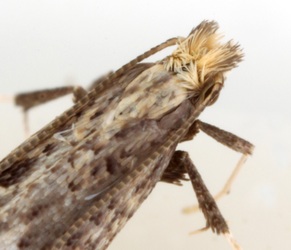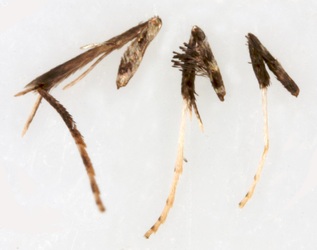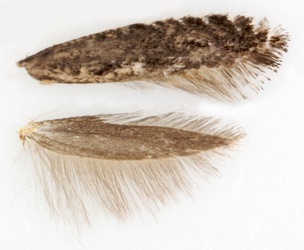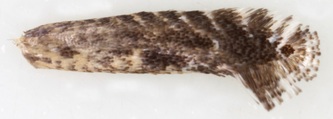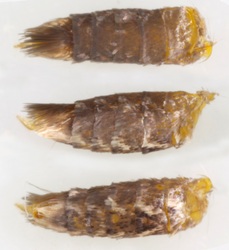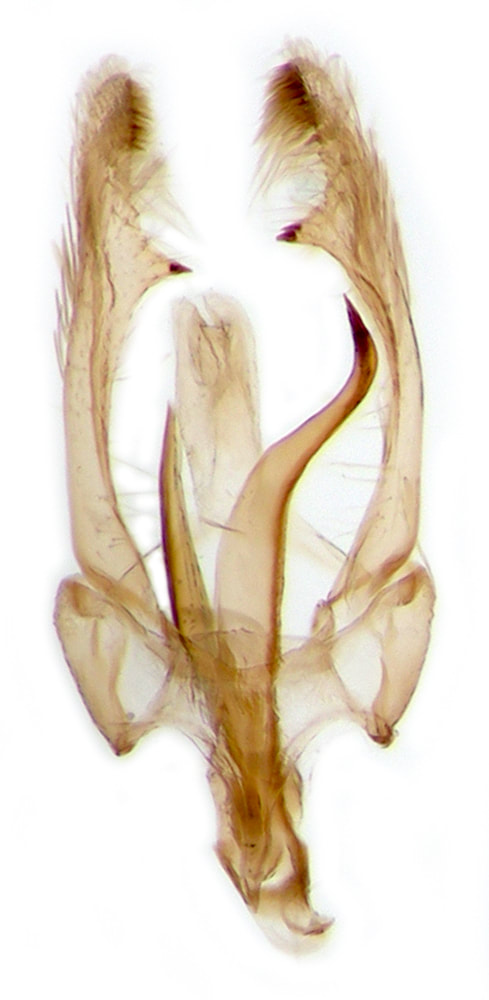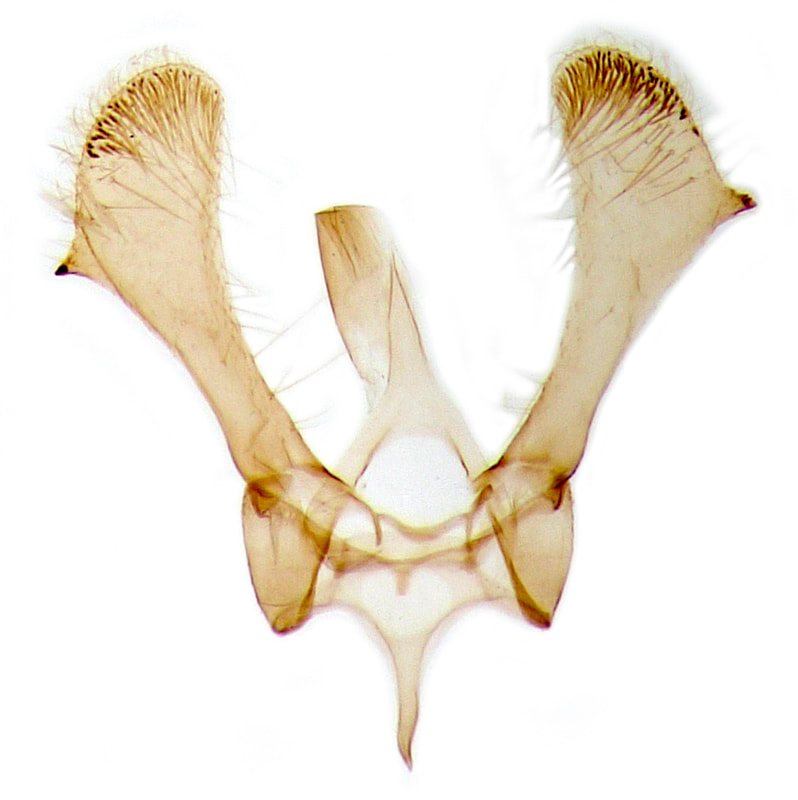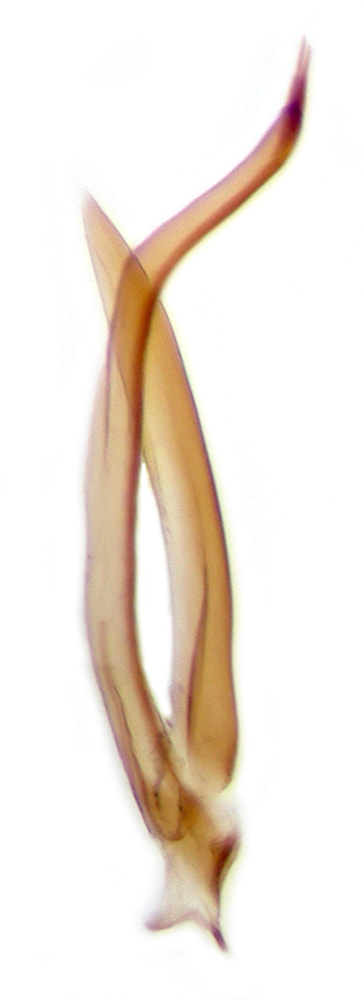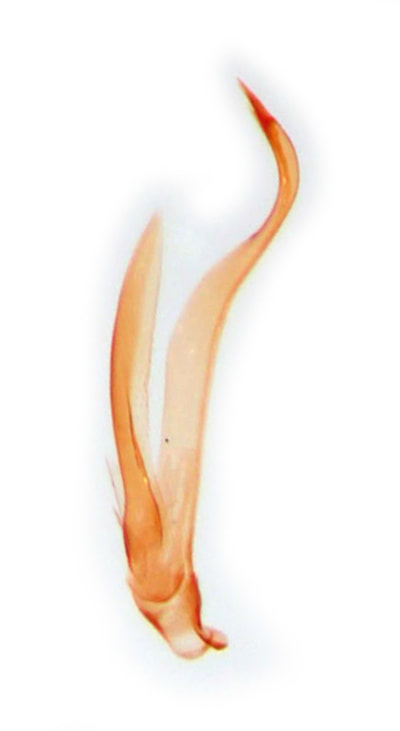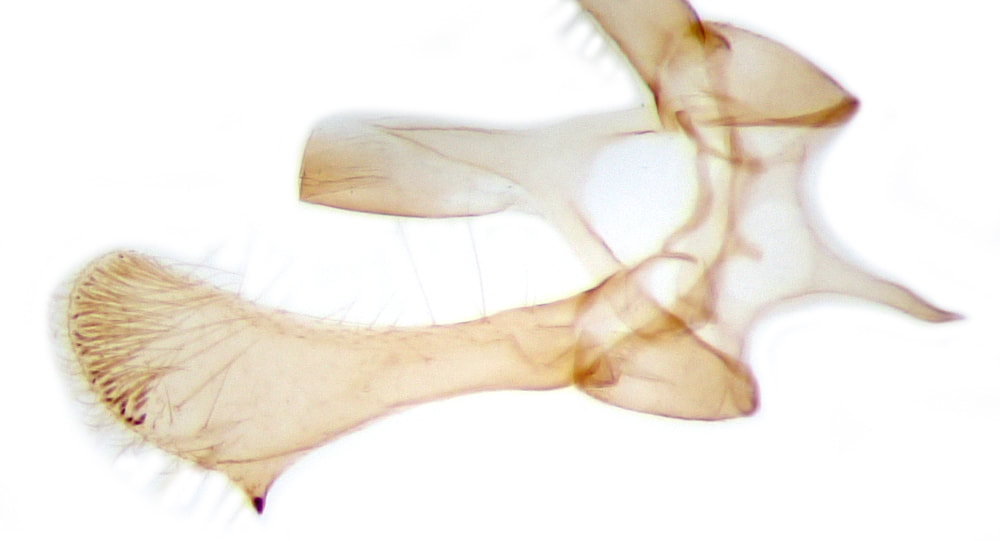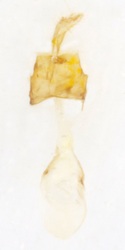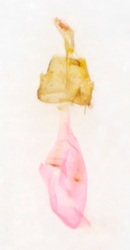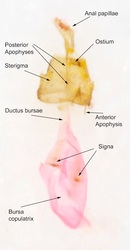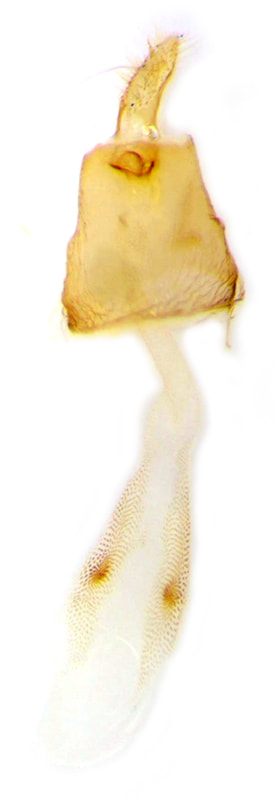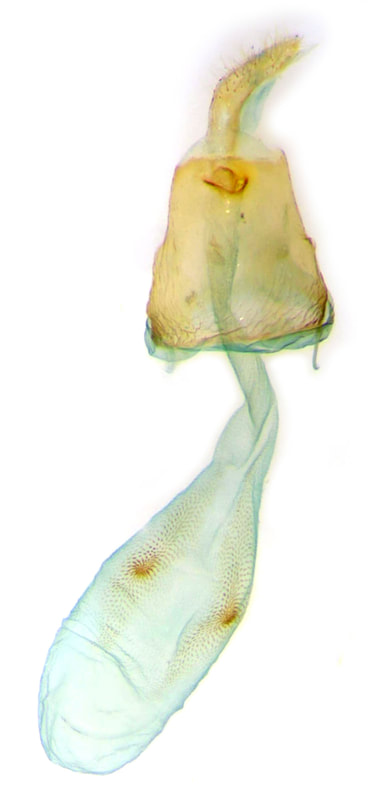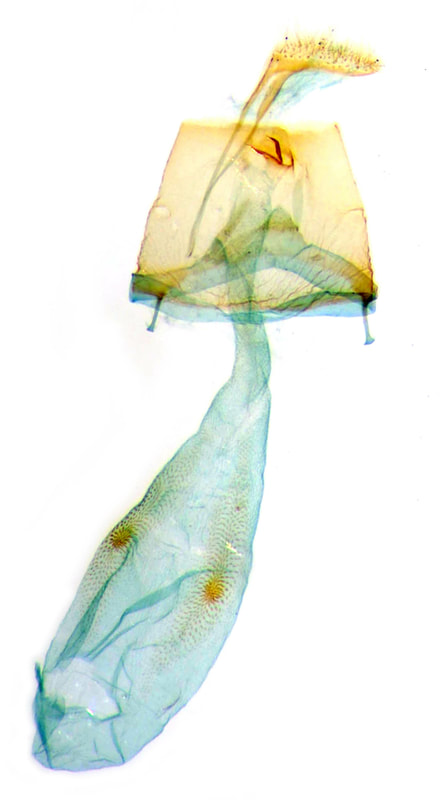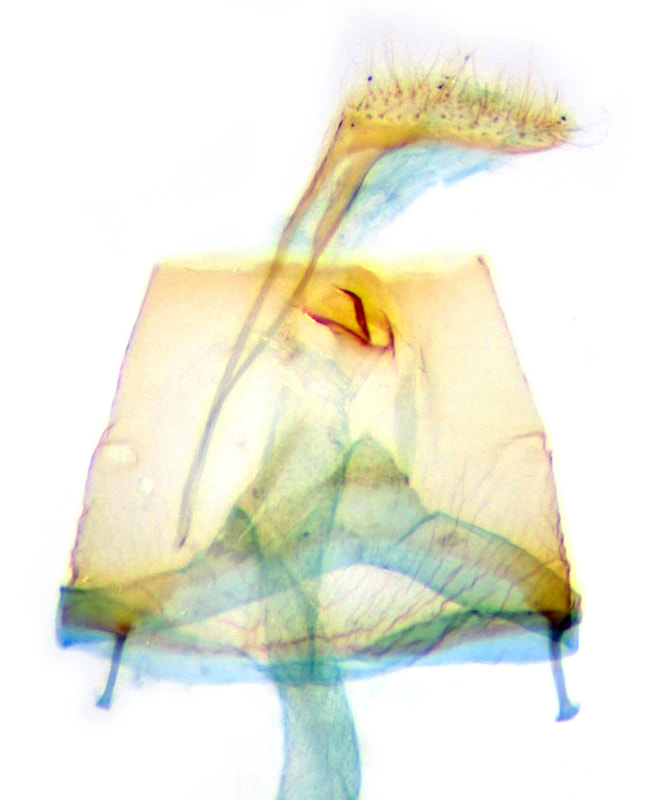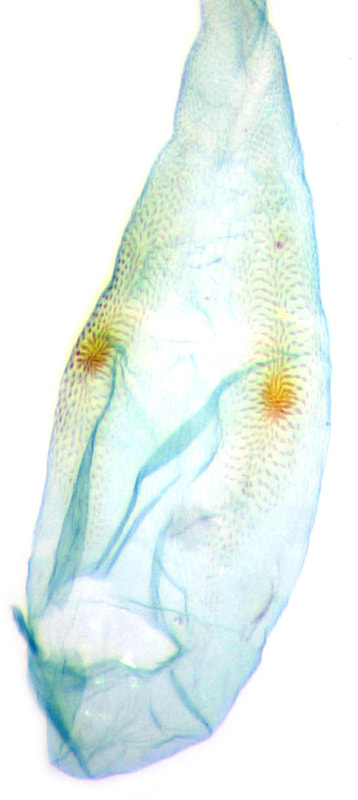15.033 Parornix torquillella (Blackthorn Parornix)
ws: 9-10mm; late May-Aug; blackthorn (Prunus spinosus), wild plum (Prunus domestica); common throughout UK.
Synonym: Deltaornix torquillella (MBGBI2)
Synonym: Deltaornix torquillella (MBGBI2)
ID: Head rough-haired > Callisto / Parornix
The key in MBGBI2 then relies on determining that the forewing is "white or whitish, irrorate with grey or fuscous-tipped scales, often so heavily as to appear grey of fuscous with a whitish pattern" for Parornix rather than "dark brown with silvery white pattern" for Callisto. The absence of clear white dorsal spots or strigulae may be a better way of excluding Callisto in most grey or fuscous Parornix specimens.
Forewing not tinged ochreous; terminal cilia not white-tipped; labial palp with S3 immaculate > P.torquillella or P.scoticella.
These two are distinguished in the key by presence (torquillella) or absence (scoticella) of a strong white anterior margin to the dark apical spot.
The male genitalia of P.torquillella are distinct from all other Parornix species in having a more elongate valva gradually expanding in width from base to apex and with a distinct spine on the costa. In other Parornix species the valva has a narrow base and then a rapid expansion into a round apex and no costal spine (although finitimella may show a hint of one).
The key in MBGBI2 then relies on determining that the forewing is "white or whitish, irrorate with grey or fuscous-tipped scales, often so heavily as to appear grey of fuscous with a whitish pattern" for Parornix rather than "dark brown with silvery white pattern" for Callisto. The absence of clear white dorsal spots or strigulae may be a better way of excluding Callisto in most grey or fuscous Parornix specimens.
Forewing not tinged ochreous; terminal cilia not white-tipped; labial palp with S3 immaculate > P.torquillella or P.scoticella.
These two are distinguished in the key by presence (torquillella) or absence (scoticella) of a strong white anterior margin to the dark apical spot.
The male genitalia of P.torquillella are distinct from all other Parornix species in having a more elongate valva gradually expanding in width from base to apex and with a distinct spine on the costa. In other Parornix species the valva has a narrow base and then a rapid expansion into a round apex and no costal spine (although finitimella may show a hint of one).
§1 Foulness, Essex; 29/08/2010; male
§2 Foulness, Essex; 23/05/2010; male
§3 Foulness, Essex; 08/05/2011; female; fw 4.6mm
§4 Foulness, Essex; 14/08/2011; female; fw 5.1mm
§5 Westcliff-on-sea, Essex; 07/08/2014; male; fw 4.9mm
§6 Cranwich Heath, Norfolk; 15/05/2017; male; fw 5.2mm
§7 Westcliff-on-sea, Essex; 21/05/2018; female; fw 4.2mm
§8 Stour Wood, Essex; 08/07/2021; male; fw 4.9mm
§9 Foulness, Essex; 13/04/2024; male; fw 4.7mm
All images © Chris Lewis
§2 Foulness, Essex; 23/05/2010; male
§3 Foulness, Essex; 08/05/2011; female; fw 4.6mm
§4 Foulness, Essex; 14/08/2011; female; fw 5.1mm
§5 Westcliff-on-sea, Essex; 07/08/2014; male; fw 4.9mm
§6 Cranwich Heath, Norfolk; 15/05/2017; male; fw 5.2mm
§7 Westcliff-on-sea, Essex; 21/05/2018; female; fw 4.2mm
§8 Stour Wood, Essex; 08/07/2021; male; fw 4.9mm
§9 Foulness, Essex; 13/04/2024; male; fw 4.7mm
All images © Chris Lewis
Page published February 2011 | Genus changed from Deltaornix 09/03/2014 | §5 added 17/08/2014 | §6 added 28/09/2017 |
§7 added 07/03/2019 | §8 added 07/08/2021 | §9 added 20/04/2024
§7 added 07/03/2019 | §8 added 07/08/2021 | §9 added 20/04/2024
